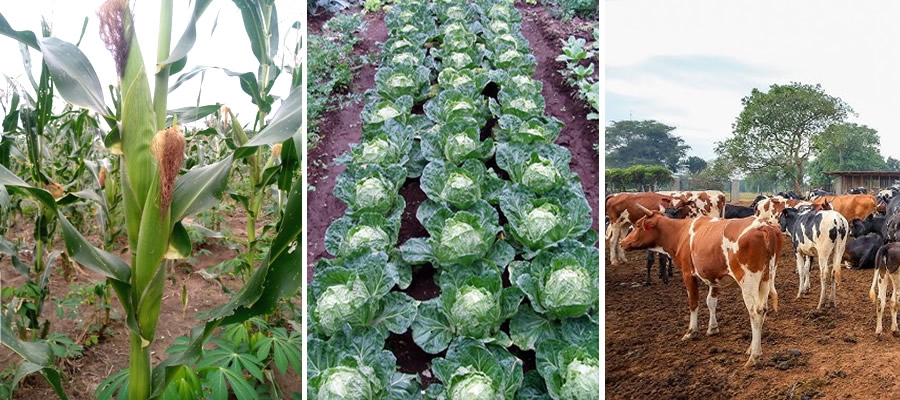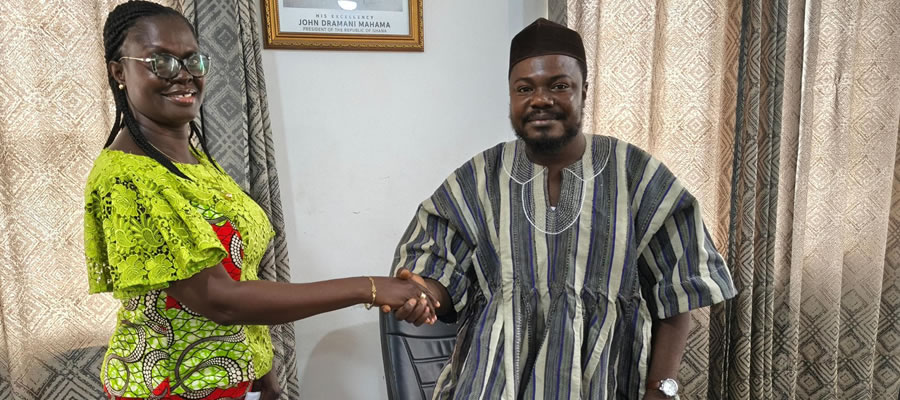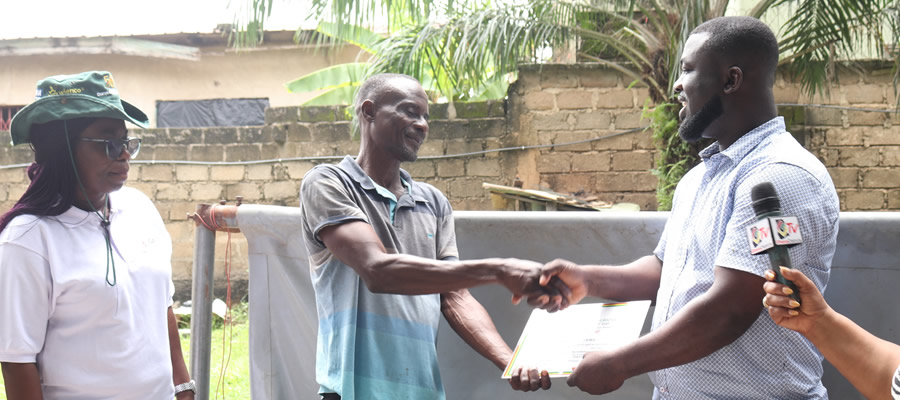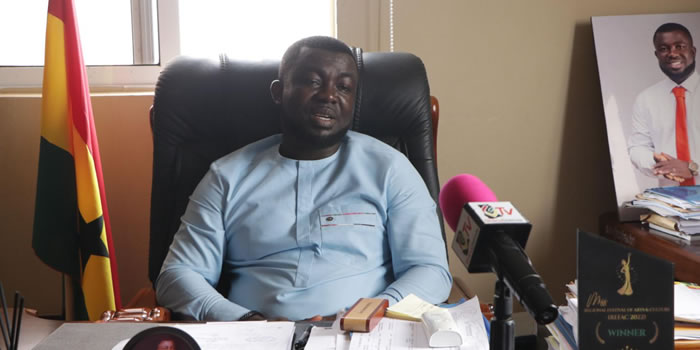

PHYSICAL CHARACTERISTICS
Location and Physical Characteristics
Location and Size
The Ga North Municipal Assembly was established by a Legislative Instrument (LI 2314) on the 16th November 2017 and inaugurated on 15th march 2018 in pursuance of the government decentralization and local government reform policy. The Municipality is located at the northern part of Greater Accra Region of the Republic of Ghana between latitude 5o 37’0 N and 5o 42’14 N, and longitude 0o 19’31W and 0o 13’42W and covers a total land mass of 636.28 (source: Department of Geography, University of Ghana, Legon). It shares boundaries with Ga West Municipal Assembly to the North and North/West, Ga central Municipal Assembly to the South/ Western part, Okaikwei North Municipal Assembly to the South/East and Ga East Municipal Assembly to the East. The Municipal capital is Ofankor.

Vegetation / Climate
The Municipality lies wholly in the coastal savanna agro-ecological zone. The relief is generally undulating at less than 5%. Rainfall pattern is bi-modal with an annual mean varying between 790mm to about 1,270mm.
Figure 2 below shows the vegetation is of the municipality is divided into two; Moist semideciduous forest and Coastal scrub and grassland
The annual average temperature ranges between 25.1 degrees Celsius in August and 28.4 degrees Celsius in February and March, and with April being the hottest month.
Humidity is generally high during the year. Average figures are about 94% and 69% at 6:00am and 15:00 hours respectively. During the raining season some areas get flooded and most roads also become unmotorable especially at the northern part of the Assembly where road network is generally bad. The vegetation of the Municipality in Regional and National context is represented in figure 2:

Biodiversity, Climate Change, Green Economy and Environment
The influx of people in the municipality coupled with its associated activities such as construction, farming, indiscriminate littering, vehicular and environmental pollution has threatened a significant percentage of biodiversity.
The proximity of the Municipality to the national capital has also made it fall prey to a lot of human activities which is causing alterations to the natural environment; this has resulted in the loss of about 87% of natural environment. Poor agricultural practices, stone quarrying and sand winning are also posing a lot of threat to the biodiversity.
Relief and Drainage The relief is generally undulating at less than 76m (250feet) above sea level. The three major rivers that run through the Municipality are the, Nsakyi, Sunkwa and Dorblo. The largest of the three, the Nsakyi passes through Amanfrom, Amamole, Odumase and Ayawaso communities (see fig. 3).
The Municipality also has a lot of rich underground water which has been tapped by commercial water bottling companies and continues to provide potable water for the rural communities and small towns in the Municipality.

Soil, Geology and Minerals
The land area is underlain by shallow rocky soil and are extensively developed on the steep slopes of the Akwapim range. The soil is mainly pale and sandy with brushy quartzite occurring on the surface in most places. These soils are rich in sandstone and limestone that are good source of material for the construction industry.
The red earth is usually developed in old and thoroughly weathered parent materials. It is typically loamy in texture near the surface, becomes more clayey below. The red soil is porous and well drained and support road construction and also provide ample moisture storage at depth for deeprooting plants including coconut, oil palm and mangoes
Location and Size
The Ga North Municipal Assembly was established by a Legislative Instrument (LI 2314) on the 16th November 2017 and inaugurated on 15th march 2018 in pursuance of the government decentralization and local government reform policy. The Municipality is located at the northern part of Greater Accra Region of the Republic of Ghana between latitude 5o 37’0 N and 5o 42’14 N, and longitude 0o 19’31W and 0o 13’42W and covers a total land mass of 636.28 (source: Department of Geography, University of Ghana, Legon). It shares boundaries with Ga West Municipal Assembly to the North and North/West, Ga central Municipal Assembly to the South/ Western part, Okaikwei North Municipal Assembly to the South/East and Ga East Municipal Assembly to the East. The Municipal capital is Ofankor.
Vegetation / Climate
The Municipality lies wholly in the coastal savanna agro-ecological zone. The relief is generally undulating at less than 5%. Rainfall pattern is bi-modal with an annual mean varying between 790mm to about 1,270mm.
Figure 2 below shows the vegetation is of the municipality is divided into two; Moist semideciduous forest and Coastal scrub and grassland
The annual average temperature ranges between 25.1 degrees Celsius in August and 28.4 degrees Celsius in February and March, and with April being the hottest month.
Humidity is generally high during the year. Average figures are about 94% and 69% at 6:00am and 15:00 hours respectively. During the raining season some areas get flooded and most roads also become unmotorable especially at the northern part of the Assembly where road network is generally bad. The vegetation of the Municipality in Regional and National context is represented in figure 2:
Biodiversity, Climate Change, Green Economy and Environment
The influx of people in the municipality coupled with its associated activities such as construction, farming, indiscriminate littering, vehicular and environmental pollution has threatened a significant percentage of biodiversity.
The proximity of the Municipality to the national capital has also made it fall prey to a lot of human activities which is causing alterations to the natural environment; this has resulted in the loss of about 87% of natural environment. Poor agricultural practices, stone quarrying and sand winning are also posing a lot of threat to the biodiversity.
Relief and Drainage The relief is generally undulating at less than 76m (250feet) above sea level. The three major rivers that run through the Municipality are the, Nsakyi, Sunkwa and Dorblo. The largest of the three, the Nsakyi passes through Amanfrom, Amamole, Odumase and Ayawaso communities (see fig. 3).
The Municipality also has a lot of rich underground water which has been tapped by commercial water bottling companies and continues to provide potable water for the rural communities and small towns in the Municipality.
Soil, Geology and Minerals
The land area is underlain by shallow rocky soil and are extensively developed on the steep slopes of the Akwapim range. The soil is mainly pale and sandy with brushy quartzite occurring on the surface in most places. These soils are rich in sandstone and limestone that are good source of material for the construction industry.
The red earth is usually developed in old and thoroughly weathered parent materials. It is typically loamy in texture near the surface, becomes more clayey below. The red soil is porous and well drained and support road construction and also provide ample moisture storage at depth for deeprooting plants including coconut, oil palm and mangoes
Date Created : 2/13/2025 12:00:00 AM











 facebook
facebook
 twitter
twitter
 Youtube
Youtube
 +233 593 831 280
+233 593 831 280 0800 430 430
0800 430 430 GPS: GE-231-4383
GPS: GE-231-4383 info@ghanadistricts.com
info@ghanadistricts.com Box GP1044, Accra, Ghana
Box GP1044, Accra, Ghana